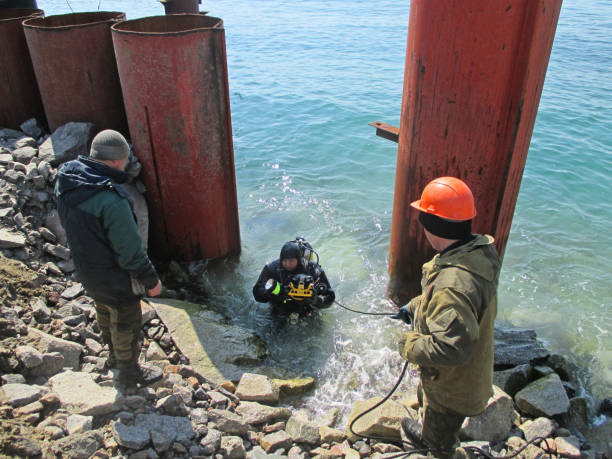
How Do Engineers Make Underwater Constructions
Building underwater structures is one of the most complex and fascinating feats of engineering. These constructions range from bridges and tunnels to oil rigs and underwater habitats. Engineers use innovative techniques and advanced materials to overcome challenges posed by water pressure, corrosion, and limited visibility. Here’s a detailed look at how engineers accomplish underwater constructions:
1. Site Analysis and Preparation
Before any construction begins, engineers conduct thorough site assessments to understand the underwater environment. This includes:
- Bathymetric Surveys: Mapping the underwater terrain to identify depth and seabed conditions.
- Soil Testing: Analyzing the composition and stability of the seabed to determine foundation requirements.
- Environmental Impact Studies: Assessing the potential effects on marine ecosystems.
Once the site is deemed suitable, preparations such as clearing debris and leveling the seabed are carried out.
2. Specialized Foundations
Creating a stable foundation is crucial for underwater structures. Common techniques include:
- Pile Foundations: Driving long, cylindrical piles into the seabed using pile drivers to provide stability.
- Caissons: Large, watertight chambers that are sunk into the seabed and filled with concrete to form a solid base.
- Gravity Foundations: Using heavy, pre-cast concrete blocks that rely on their weight to remain stable.
3. Cofferdams
Cofferdams are temporary enclosures built to keep water out of the construction area. These structures allow engineers to work in a dry environment below the waterline. Common types include:
- Sheet Pile Cofferdams: Made of interlocking steel sheets driven into the seabed.
- Cellular Cofferdams: Constructed using circular steel cells filled with gravel or sand for stability.
4. Underwater Welding and Robotics
Joining materials underwater is a challenging task that requires advanced techniques:
- Wet Welding: Using waterproof electrodes to weld directly in water. This method is quick but less durable due to potential corrosion.
- Dry Welding: Performed inside a sealed chamber with no water exposure, ensuring higher quality.
- Underwater Robots (ROVs): Remote-operated vehicles equipped with cameras and tools to perform welding and inspections in deep or hazardous conditions.
5. Prefabrication
To minimize underwater work, large sections of structures are prefabricated on land and transported to the site. These components are then assembled using cranes, barges, and divers. Prefabrication ensures precision and reduces the time spent working underwater.
6. Concrete Construction
Concrete is a key material for underwater construction due to its durability and resistance to water. Special types of concrete, such as:
- Hydraulic Concrete: Designed to set and harden underwater.
- Self-Compacting Concrete: Flows easily to fill molds without the need for vibration.
Concrete is often poured using a tremie pipe, a long tube that prevents water from mixing with the concrete during placement.
7. Tunneling Techniques
For underwater tunnels, engineers use methods such as:
- Immersed Tube Tunnels: Pre-cast tunnel sections are floated to the site, sunk into place, and connected.
- Tunnel Boring Machines (TBMs): These massive machines excavate tunnels while simultaneously reinforcing the walls.
- Drill-and-Blast: Used in rock formations, this involves drilling holes, placing explosives, and removing debris.
8. Dealing with Water Pressure
Underwater structures face immense pressure. Engineers combat this by:
- Reinforcing Materials: Using steel and advanced composites to withstand pressure.
- Design Optimization: Creating streamlined shapes to distribute pressure evenly.
- Pressure-Equalizing Chambers: Incorporating features that allow gradual equalization of pressure.
9. Corrosion Protection
Saltwater is highly corrosive, making material protection essential. Techniques include:
- Cathodic Protection: Installing sacrificial anodes that corrode instead of the main structure.
- Special Coatings: Applying anti-corrosion paints and epoxy layers to metal surfaces.
- Use of Non-Corrosive Materials: Incorporating stainless steel and composites resistant to rust.
10. Safety Measures
Safety is paramount in underwater construction. Engineers ensure:
- Advanced Diving Equipment: Providing divers with modern gear for prolonged and safe operations.
- Remote Monitoring: Using sensors and cameras to monitor progress and detect issues.
- Emergency Protocols: Establishing plans for quick responses to accidents or equipment failures.
Conclusion
Underwater construction is a blend of cutting-edge technology, innovative design, and meticulous planning. From laying stable foundations to assembling massive structures in challenging conditions, engineers continually push the boundaries of what’s possible beneath the surface. These projects not only showcase human ingenuity but also pave the way for future advancements in marine engineering.

